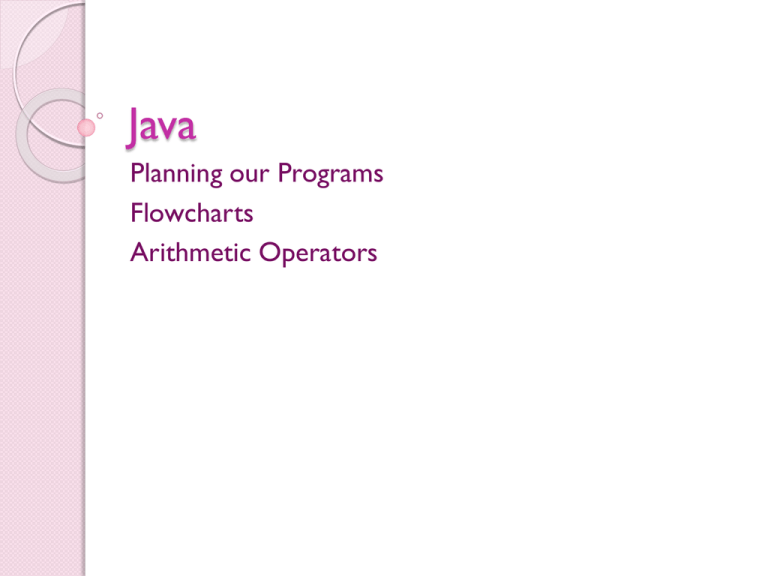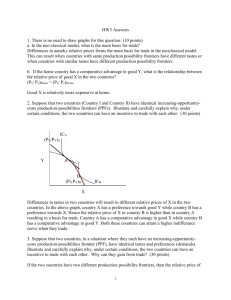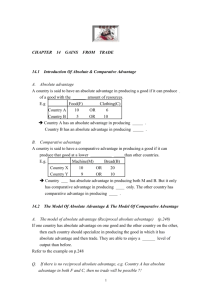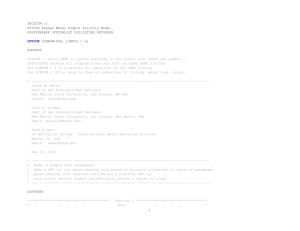Java
advertisement

Java
Planning our Programs
Flowcharts
Arithmetic Operators
Planning Programs
It is very important to plan our programs
before we start coding
There are two ways of planning a
program;
1. Pseudo-code = makes use of English
statements to plot the program
2. Flowcharts = use graphical symbols
Example
Lets say we had the following program
class VariablesExample {
public static void main (String args[]){
//variables are declared and assigned
int N1 = 50;
int N2 = 13;
int tot;
//the total of variables N1 and N2
//is stored in tot
tot = N1 + N2;
//Finally, we can show the result
System.out.println(tot);
}
}
Pseudo-code Plan
The following is the Pseudo-code Plan for
the previous program;
1. Start
2. Store 50 in N1.
3. Store 13 in N2.
4. Add N1 to N2 and store result in tot.
5. Display the value in tot.
6. Stop
Flowchart Plan
The following is the Flowchart Plan of the
previous program;
Start
N1 = 50
N2 = 13
tot = N1 + N2
Display tot
End
Why do we Plan Programs?
We plan our programs in order to know
what we will be doing before we start
coding
With a plan it will be much easier to
know what structure our program will
have
Planning makes programming much easier
Flowcharts
A flowchart is basically a graphical
presentation of our program
A flowchart is very is to read and
understand
Flowcharts break down our programs
into many steps
Flowchart
Symbols
Terminator
The terminator is used to show
1. The start and
2. The end of a program
START
END
Process
A process is any action to be done by the
program
The process
in this case is
declaring two
variables
N1 = 50
N2 = 13
Decision
Decision are used when we have a
comparison
Decisions have two outputs which are
YES or NO.
Is it
Raining?
NO
YES
Input/Output
The Input/ Output symbol is used
1. When the program requires and input
2. When the program results in an output
In this case
the output to
be shown is
the contents
of tot
Display
tot
Try it out …
class Variable{
Create
public
static void main (String args[]){
are declaredplan
and assigned
1.//variables
The pseudo-codes
int N1 = 20;
2.int The
plan
N2 =flowchart
10;
int the
tot; following program;
for
int tot2;
//tot1 and tot 2 declared
tot = N1 + N2;
tot2 = N1 – N2;
//Finally, we can show the result
System.out.println(tot2);
}
}
Arithmetic Operators
Arithmetic Operators are used to
perform mathematical calculations
The basic arithmetic operators ;
1. + (addition)
These are called
2. - (subtraction)
binary operators
3. / (division)
because they need
4. * (multiplication)
to use at least two
5. % (remainder)
variables
Unary Operators
Then are also what we call unary operators
These only need one variable
1. ++ (increment by 1)
2. -- (decrement by 1)
3. variable += x (same as variable = variable + x)
variable -= x (same as variable = variable - x)
5. variable *= x (same as variable = variable * x)
6. variable /= x (same as variable = variable / x)
7. variable %= x (same as variable = variable % x)
4.
Combining Operators
We could create a formula by combining
a number of operators
X = 10 + 4 * 3 / 2;
The order the operators are work out is
the following;
Multiplication
2. Division
3. Remainder
4. Addition
5. Subtraction
1.
10 + 4 * 3 / 2
10 + 12 / 2
10 + 6
16
Use of Brackets
When we use brackets in our formula we
are telling the program which operations
to calculate first
X = (10 + 4) * 3 / 2;
As we can
see the
result has
changed!!
(10 + 4 ) * 3 / 2
14 * 3 / 2
42 / 2
21











